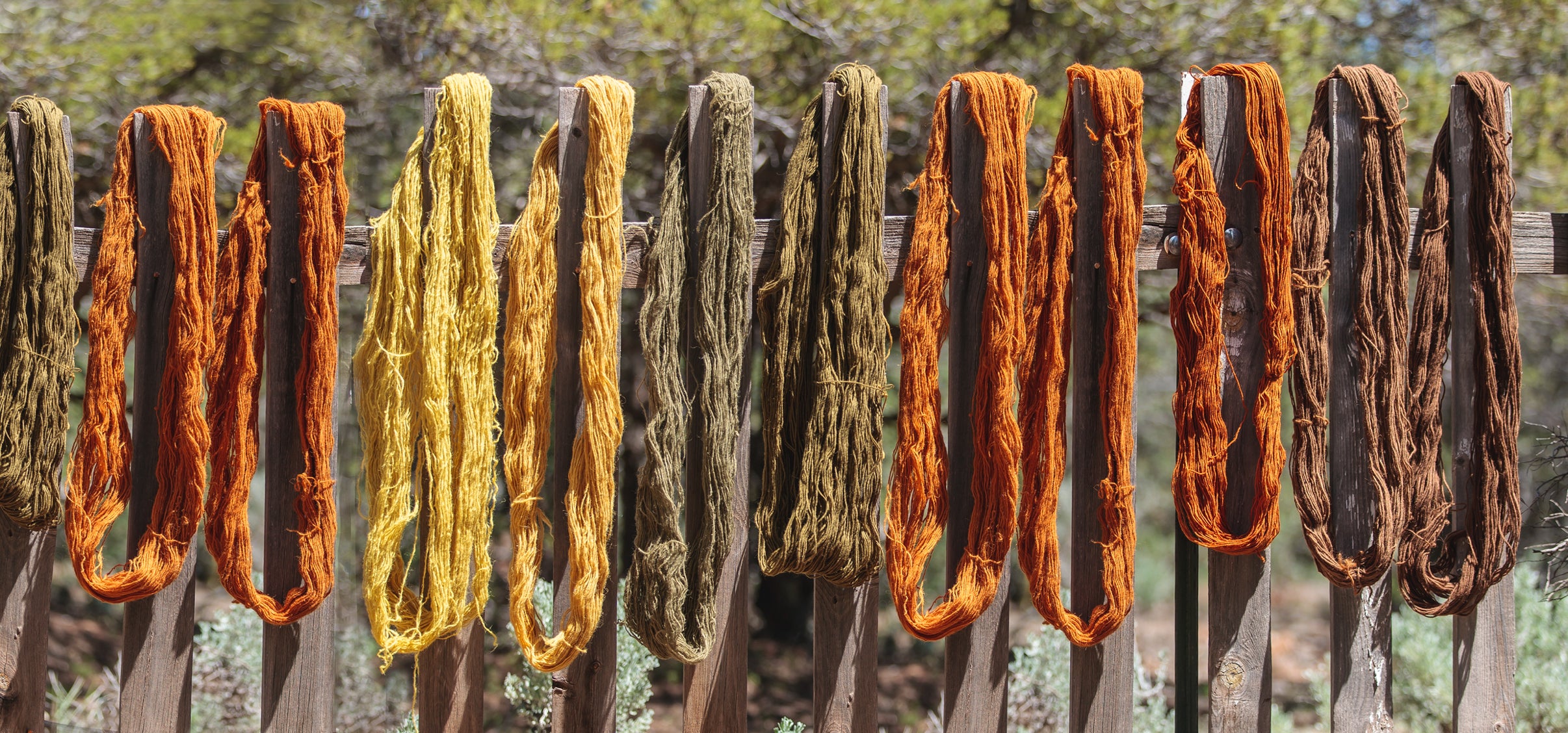Gifting has never been easier
Perfect if you're short on time or are unable to deliver your gift yourself. Enter your message and select when to send it.
Story by Mark Welsh / Photography by Joe Coca and Ines Hinojosa © Thrums Books, Heidi Gustafson, Prathna Singh, and Living Blue

Keith Recker developed his deep love of color and textiles working alongside artists and artisans for over 30 years. In his ravishing book, True Colors, Keith visits 26 ‘world masters of natural dyes and pigments’ and reveals the historical importance and environmental sustainability of color made from natural materials. Imagine purples made from sea snails, vivid corals made from mushrooms, and rich burnt oranges made from Eucalyptus leaves and twigs.

Could you give us a brief history of natural dyes through the ages?
This ancient tradition dates back well over 30,000 years ago, at least based on the archeological discovery of twisted flax fibers in the settlement layers of a cave in the Republic of Georgia which are quite clearly dyed shades of blue, pink, yellow, and grey. We didn’t start using un-natural color until 1856, and so we had many millennia of botanical color, drawing on only what was available to us.
Pictured: Irene Clarke is a Navajo weaver who uses natural ingredients like sagebrush, walnut hulls, and rabbit bush to create warm, vivid dyes. Here, freshly dyed skeins dry in the sun

You’re clearly obsessed with color.Where did your passion come from?
During my journey to more than 60 countries, I’ve seen people embracing languages of stripes and checks and tie dye and woven motifs in a range of colors that just stop you in your tracks. Color really became an object of fascination to me. What does it mean? How is it made? How has it evolved? And what impact can it have environmentally?
Pictured: Author Keith Recker stirring the pot with natural dyer, Juana Gutierrez Contreras; Left: The Ayoreo people dye fibers harvested from ground growing Bromeliads with tree bark and berries.
– Keith Recker from True Colors

Artist Heidi Gustafson gathers ochre from many sources including this range of pigments from Santa Cruz, CA.

What role can sustainable color play in the evolution of textiles?
I think sustainable color represents the value proposition of our time. From a fashion and home point of view it’s where we should be investing our dollars. When you combine the history of natural dyeing and the more nuanced visual results with the notion of other people’s hands and cultures being involved, as well as the state of our environment, natural color is hugely compelling.
Pictured: California dyer Sasha Deurr uses fresh mint to create dreamy greens.

The book highlights several ways in which natural dyes can help reduce waste and improve our environmental situation. Can you share the anecdote about marigolds?
Marigolds are offered at Hindu temples all over India in the billions every day, and when they wilt, tradition dictates that they're supposed to be cast upon the waters to dispose of them. They can't be treated as garbage, so they create their own kind of ecological issue as they decompose in waterways all over the country. Well, Rupa Trivedi, the founder of Adiv Pure Nature, realized that marigolds yield a beautiful yellow dye stuff, and she is now systematically collecting them, drying them, using them, in contact prints and to create die vats.
Pictured: Maria Elena Pombo dyes silks with avocado pits and water from various locations.

Urban artisan Rupa Trivedi created a sustainable, scalable approach to natural color by recycling marigolds from Hindu temples in Mumbai into plant dyes.
In the book, you talk about how natural color can help create more meaningful relationships between us and our belongings. Could you elaborate?
We need to walk away from this idea of fast fashion and fast home and get to a place where we're investing in things that are meaningful enough and interesting enough that we plan to live with them for a long time. Do we mend things? Yeah, maybe. Do we dye them or overdye them when they start looking a little faded? Yeah, absolutely. True Colors unfolds a lot of stories about how we can not only source the right stuff but engage with living with it for quite a long time.

How can this idea of “meaning” help the planet?
The notion of “meaning” is so exciting. It means that we walk away from a fashion world where 80% of what we buy ends up in a landfill within a year. It means that we walk away from the proposition of, say, home furnishings where we pollute almost as much as the extraction industries, including oil and coal and fossil fuels mining. We walk away from all of that and we walk towards people. We walk towards talent and technique. We walk toward things that have values that we believe in so that it creates a relationship between us. I don't mean to get all metaphysical on you, but the notion of meaning in the year 2020 is pretty profound.
At the risk of alienating all the colors you’ve worked with do you have a favorite?
I've devoted an entire chapter to it. The twelve shades of indigo.

Bangladeshi social enterprise Living Blue Farms creates pure indigo pigment.
Your Shopping Cart is Empty
Browse our latest collection or check your saved favorites to add more items to your cart.






Manage your profile, track your orders, and enjoy a seamless shopping journey with us.